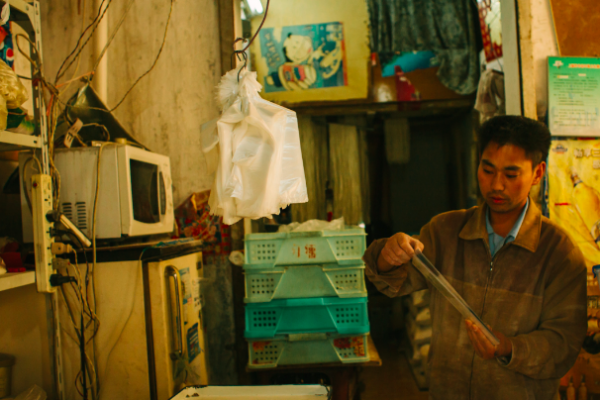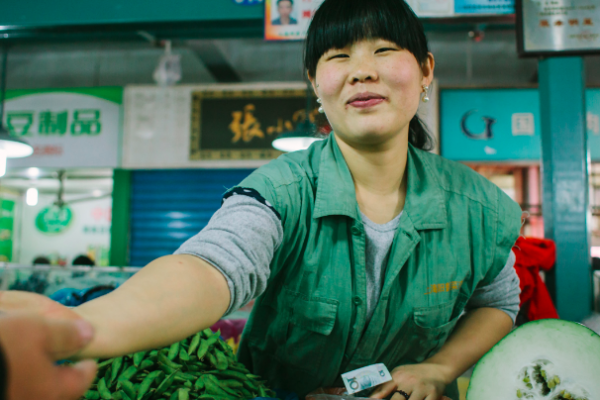Another update from China. Thanks to the Great Firewall, I’m stuck in a Web 1.0 world of email and blogging.

Our group spent the day conducting ethnographic interviews of food sellers and consumers in a wide variety of contexts. We met with restaurant managers, supermarket shoppers, rice shop owners, and sidewalk crab hawkers. We interviewed people from several age brackets, to learn about the unique but also shared habits and concerns regarding food in China.
It’s hard to understate the level of concern around food safety. The elderly we spoke to actively avoid eating outside of the house, at any time, because of safety concerns. People who raise their own chickens and eggs take comfort in knowing that the food is not only fresh, but also safe.
Supermarkets offer a wide range of processed carbohydrates in shiny packaging while promotional specials blare out of speakers. Major brands offer a trusted name to wary consumers. They also offer a range of imported fruits from all over the world: apples from Washington state, bananas from Chile. The supermarkets do not even bother trying to compete with local produce markets, an interesting behavior I’ve also seen in Liberia, where Lebanese-owned supermarkets complement fresh produce at traditional market stalls. Traditional and local crops are fresher and cheaper at traditional markets, and consumers shop at both types of market for to combine their needs. A weekly trip to the supermarket provides a bounty of shelf-stable goods and supplies, while the more perishable items can be found at small vendors closer to home. Given this split in offerings, there might be potential to get some of the local market supply chain into the larger supermarkets, the way Target has introduced fresh groceries, and Walmart and Whole Foods have incorporated local offerings into their national supply chains.
Restaurants signal their quality by posting licenses and certifications at the entrance. Meat and seafood are considered fresh if it’s still alive in a cage or tank at the market. One of our group members said she never sees people buy fish at one market, because it’s already dead, and therefore not as fresh as it could be.

Local vendors are creative in augmenting their offerings. A woman selling live crabs also offers bath towels (which we purchased, to augment our hostel’s offerings). A vegetable seller gets higher profit margins on the fried turnip cakes she cooks while watching over the produce.
We’ve generated a wide spectrum of ideas, and begun to qualify them on axes of potential scale and the amount of time required to implement. We then bucketed them into a handful of themes, which emerged rather organically across our many post-it notes:
- Markets (the physical place – e.g. a seed market)
- Distribution of food, to improve the supply chain from producer to consumer
- Building integration (e.g. vertical farming)
- Sharing and coops offer communal opportunities
- Our island’s surrounding waterways, polluted as they are, offer unique food distribution opportunities.
- The branding of the island and its products in the mind of Shanghainese
Tomorrow we jump into full ideation and selection mode, and begin to tear into a specific proposal.
